Burgundy is a wine region in France that is known for producing some of the world’s most famous and expensive wines. The Burgundy wine region is located in the east-central part of France and is divided into five primary wine-growing areas. Chardonnay and Pinot Noir are the main focus of wine production in Burgundy, with around 60% of the production concerning white wines from the grape varieties of Chardonnay and Aligoté, and 30% of red bourgogne wines produced from Pinot Noir and Gamay.
If you’re planning a trip to Burgundy in 2023, you’ll want to make sure you have a guide to the region’s wine offerings. The Burgundy wine region is divided into several sub-regions, each with its own unique terroir and wine-making traditions. The Côte d’Or, for example, is home to some of the most famous grand cru vineyards in the world, while the Chablis region is known for producing crisp, mineral-driven white wines. Whether you’re a seasoned Burgundy wine enthusiast or just starting to explore the world of wine, Burgundy has something to offer everyone.
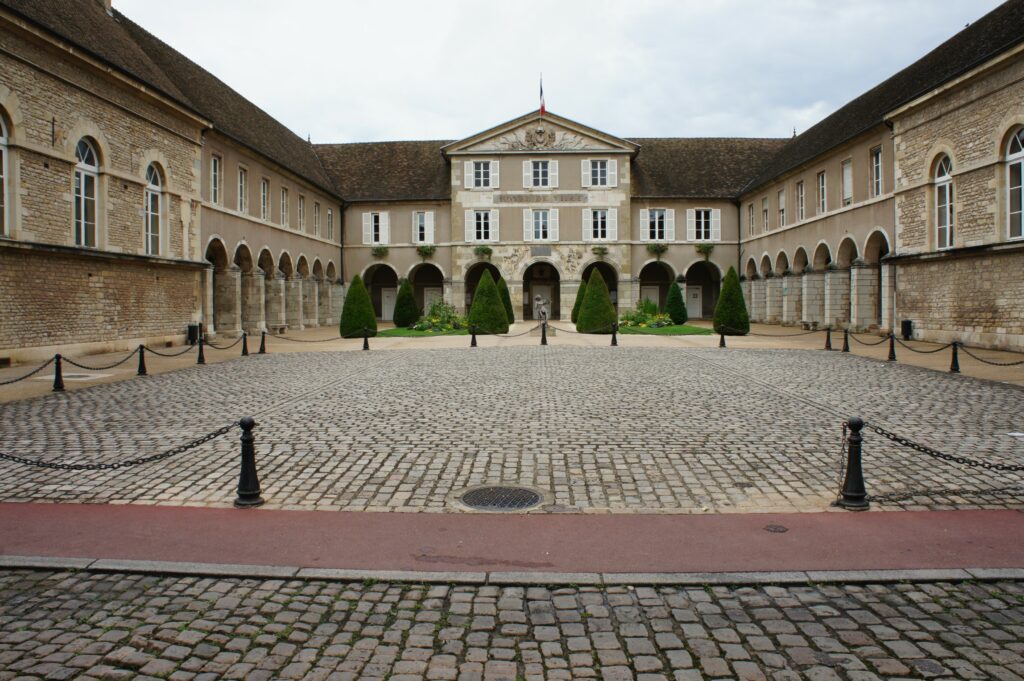
Burgundy Wine Regions
The Burgundy wine region in east-central France that is known for its wine production. The region is divided into five primary wine-growing areas, each with its own unique characteristics and Burgundy wine styles. These areas are Côte de Nuits, Côte de Beaune, Côte Chalonnaise, Mâcon, and Chablis.
Côte de Nuits
Côte de Nuits is located in the northern part of the Côte d’Or and is known for producing some of the finest red wines in the world. The region is home to the famous Grand Cru vineyards, which produce some of the most expensive and sought-after grand crus in the world. Pinot Noir is the primary grape variety grown in this Burgundy wine region, and the wines produced here are known for their complex aromas and flavors.
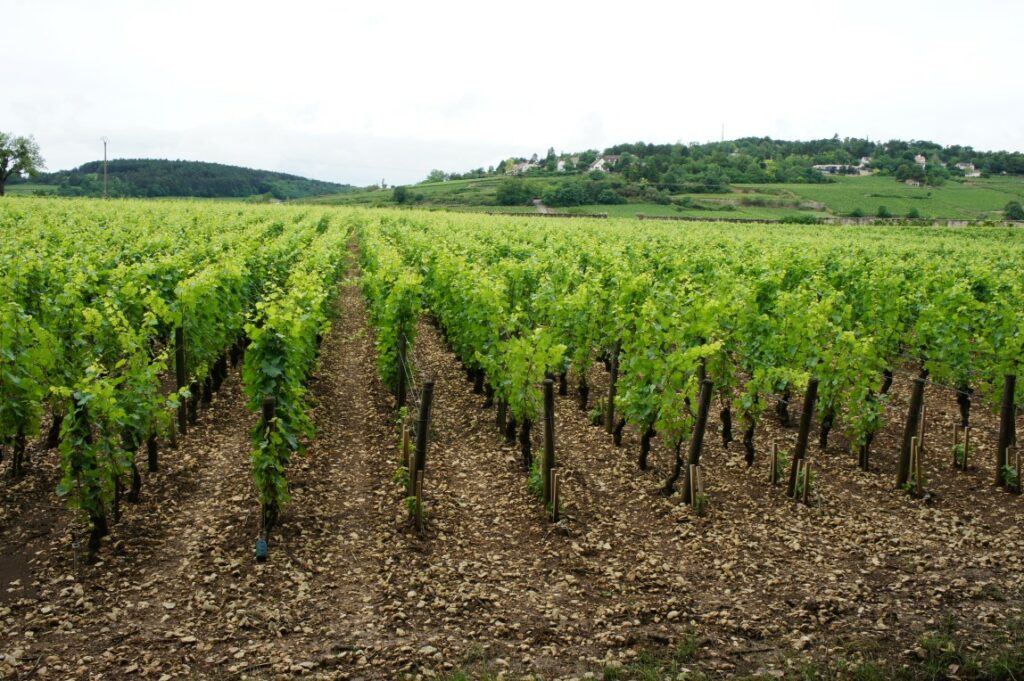
Côte de Beaune
Côte de Beaune is located in the southern part of the Côte d’Or and is known for producing some of the finest white wines in the world. Chardonnay is the primary grape variety grown in the region, and the wines produced here are known for their elegance and finesse. This Burgundy region is also home to some of the most famous Grand Crus in the world, including Corton-Charlemagne and Montrachet.
Winemakers like the Domaine Simon Bize et Fils use Pinot Gris grapes to produce bourgogne blanc wines.
Côte Chalonnaise
Côte Chalonnaise is located south of the Côte de Beaune and is known for producing both red and white wines. The region is home to several appellations, including Mercurey and Givry, which produce high-quality wines at more affordable prices than those found in the Côte d’Or. Pinot Noir and Chardonnay are the primary grape varieties grown in the region.

Mâcon
Mâcon is located in the southernmost part of Burgundy and is known for producing high-quality white wines at more affordable prices than those found in the Côte d’Or. Chardonnay is the primary grape variety grown in the Burgundy region, and the wines produced here are known for their fresh, fruity flavors. The region is also home to several appellations, including Pouilly-Fuissé and Saint-Véran.
In conclusion, Burgundy is a region that is rich in history and tradition when it comes to wine production. The region’s five primary Burgundy wine-growing areas each have their own unique characteristics and wine styles, making it an ideal destination for wine lovers. Whether you are looking for a complex and elegant red wine, a fresh and fruity white wine or a village wine, Burgundy has something to offer for every palate and budget.
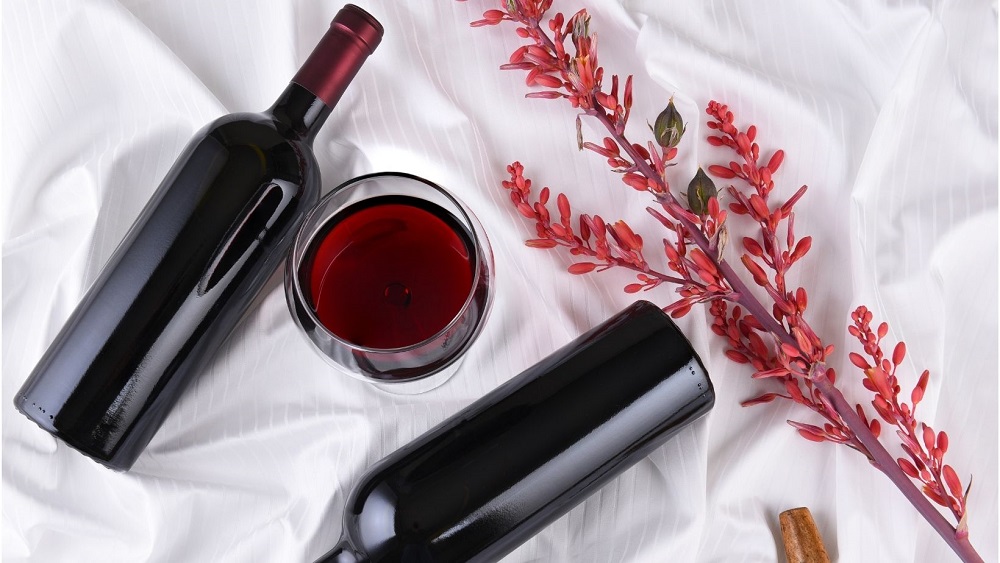
Grape Varieties
Burgundy is known for producing some of the world’s most sought-after wines, and the region’s reputation is closely tied to the quality of its grape varieties. The three main grapes grown in Burgundy are Pinot Noir and Chardonnay as well as Gamay.
Chardonnay
It`s the most widely planted grape variety in Burgundy, and it is used to produce some of the region’s most famous white wines. Synonyms for the Chardonnay grape are Aubaine, Beuanois, Melon Blanc, Morillon or Pinot Chardonnay. It`s grown throughout Burgundy, but it is most commonly found in the Côte de Beaune sub-region. The grape produces white Burgundy that is crisp, dry, and acidic, with flavors of green apple, lemon, and mineral notes.
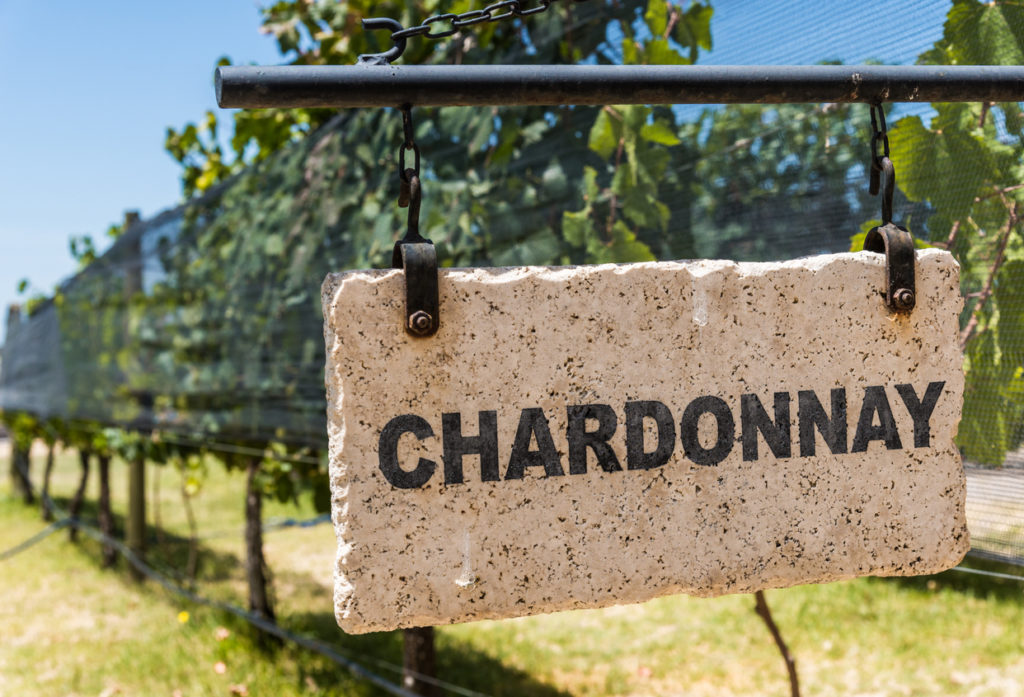
Pinot Noir
Pinot Noir is the red grape variety that is most commonly associated with Burgundy. It is grown throughout the region, but it is most commonly found in the Côte de Nuits sub-region. Pinot Noir produces Burgundy wines that are light to medium-bodied, with flavors of red fruit, such as cherry and raspberry, as well as earthy and spicy notes.
Gamay
Gamay is a red grape variety that is grown in the Beaujolais sub-region of Burgundy. It is used to produce Beaujolais wine, which is known for its light and fruity character. Gamay produces wines that are low in tannins and high in acidity, with flavors of red fruit, such as strawberry and raspberry.
Overall, the grape varieties grown in Burgundy are known for producing wines that are complex, elegant, and nuanced. The region’s winemakers take great care in cultivating and harvesting these grapes, and they use traditional winemaking techniques to produce wines that are true to their terroir.

Terroir and Climat
Burgundy is known for its unique terroir, which is the combination of soil, climate, and geography that gives the wine its distinctive taste and character. The region’s terroir is so important that it is often referred to as the “soul” of Burgundy wine.
Each vineyard plot in Burgundy is known as a Climat, and each Climat has its own unique terroir. The concept of Climat is so important that it has been recognized by UNESCO as a World Heritage Site.
The Burgundy wine region is divided into five main sub-regions, each with its own unique terroir and Climats. These sub-regions are Chablis, Côte de Nuits, Côte de Beaune, Côte Chalonnaise, and the Mâconnais.
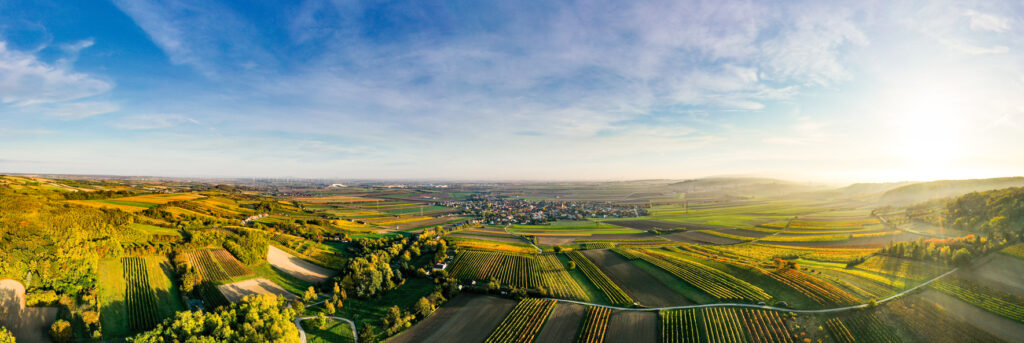
In Burgundy, the terroir is so important that winemakers often use traditional cultivation and winemaking techniques to preserve the unique character of each Climat. For example, some winemakers still use horses to plow the vineyards, as this is believed to be less damaging to the soil than using tractors.
The terroir and Climat of Burgundy are also closely linked to the grape varieties grown in the region. Both Pinot Noir and Chardonnay are the main grape varieties used for red and white Burgundy wines. The terroir and Climat of Burgundy are believed to give these grapes their unique character and flavor.
Overall, the terroir and Climat of Burgundy are central to the region’s winemaking traditions and the unique character of its wines. Understanding the terroir and Climat of Burgundy is essential for anyone who wants to appreciate the region’s wines fully.
Vineyards and Growers
Burgundy wine region is home to some of the most prestigious vineyards and growers in the world. The region’s unique terroir and climate make it an ideal location for growing grapes that produce high-quality wines. In this section, we will explore some of the most notable vineyards and growers in Burgundy.
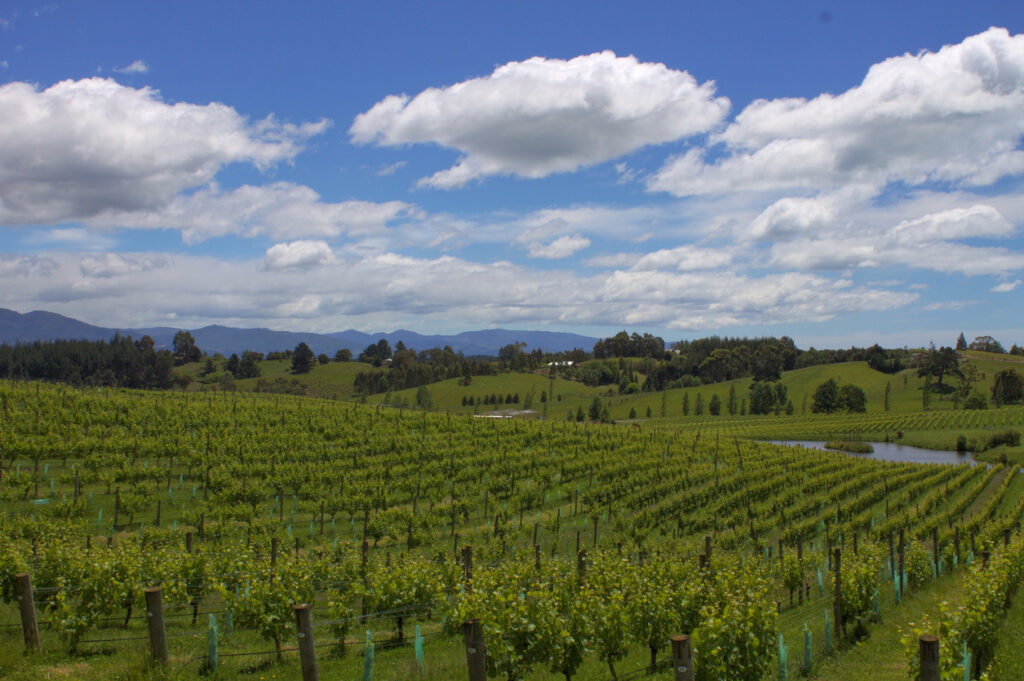
Young Growers
In recent years, a new generation of young growers has emerged in Burgundy. These growers are bringing fresh ideas and innovative techniques to the region, while still respecting the traditions that have made Burgundy wines famous around the world.
One such grower is Thibaud Clerget, who is the fourth generation of his family to work in the vineyards. He has taken over from his father and is committed to producing wines that reflect the unique terroir of Burgundy. Another young grower to watch is Céline Fontaine, who took over her family’s vineyard in 2010. She is known for her elegant and refined wines, which are highly sought after by Burgundy wine enthusiasts.

These young growers are not afraid to experiment with new techniques and grape varieties, while still respecting the traditional methods of winemaking that have been passed down through generations. They are producing wines that are both innovative and true to the Burgundian style.
In conclusion, Burgundy wine region is home to some of the most prestigious vineyards and growers in the world. The emergence of young growers in recent years has added a new dimension to the region’s winemaking, bringing fresh ideas and innovative techniques. Whether you are a seasoned wine enthusiast or a newcomer to the world of wine, Burgundy is a region that should not be missed.
Wineries
Burgundy is home to some of the most prestigious wineries in the world, producing high-quality wines that are renowned for their aroma and taste. The region is divided into several sub-regions, each with its own unique set of wineries. Here are some of the best wineries to visit in Burgundy:
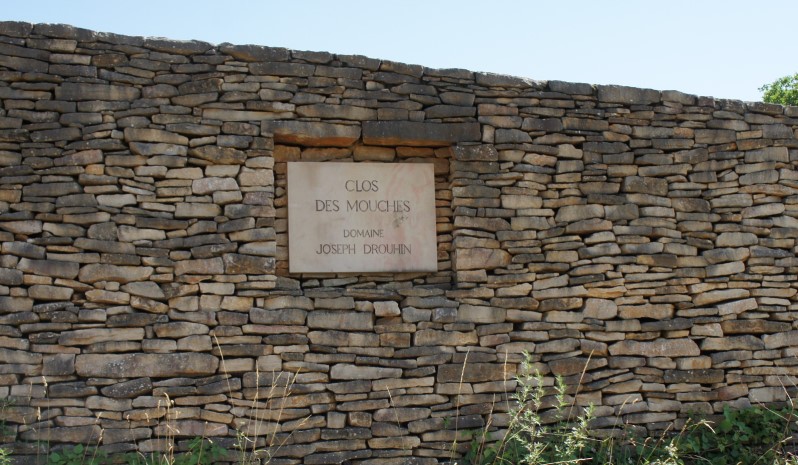
Grand Cru Wineries
Grand Cru wineries are the highest classification of wineries in Burgundy, producing wines of exceptional quality. Some of the most notable Grand Cru wineries in Burgundy include Domaine de la Romanée-Conti, Domaine Leflaive, and Domaine Comte Georges de Vogüé. These wineries produce some of the most expensive wines in the world, with prices ranging from several hundred to several thousand dollars per bottle.
Premier Cru Wineries
Premier Cru wineries are the second-highest classification of wineries in Burgundy, producing wines of excellent quality. Some of the most notable Premier Cru wineries in Burgundy include Domaine Armand Rousseau, Domaine Dujac, and Domaine Faiveley. These wineries produce premier cru wines that are slightly less expensive than Grand Cru wines, but still command a premium price.
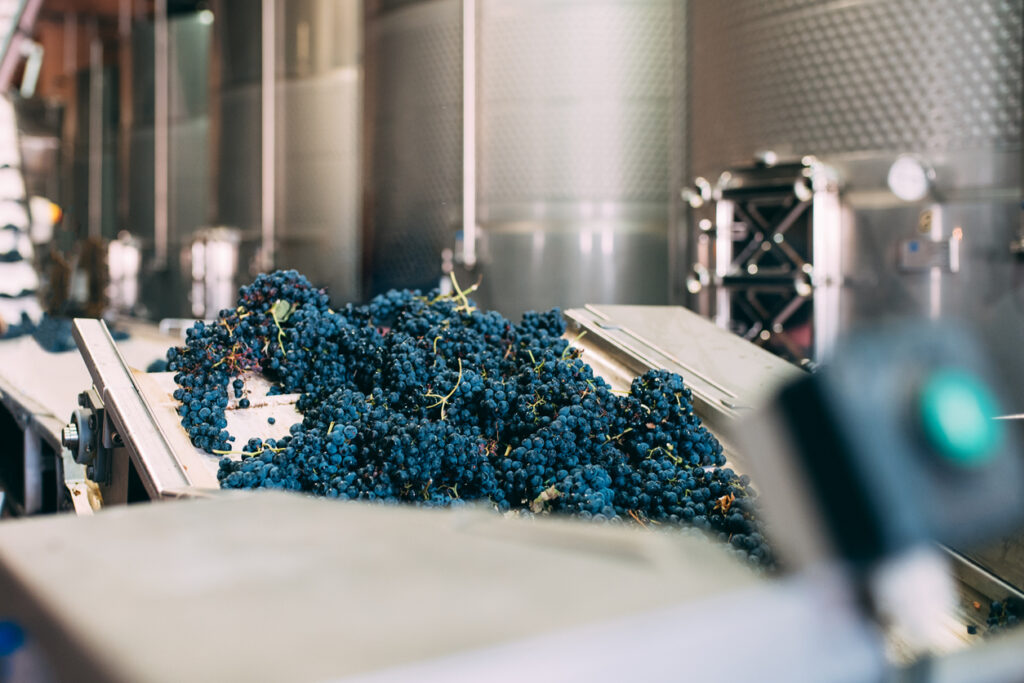
Village Wineries
Village wineries are the third-highest classification of wineries in Burgundy, producing wines of good quality. Some of the most notable Village wineries in Burgundy include Domaine de la Vougeraie, Domaine de Montille, and Domaine Hubert Lignier. These wineries produce village appellation wines that are more affordable than Grand Crus and Premier Crus, but their village wines still offer a great taste and aroma.
When visiting wineries in Burgundy, it is important to note that many wineries require advance reservations, especially during peak season. It is also recommended to hire a local guide or join a Burgundy wine tour to fully appreciate the history and culture of the region and village wines.
Notable Wines
Burgundy is known for producing some of the most sophisticated and terroir-influenced wines in the world. Here are some of the notable wines to try in the region:
Montrachet
Montrachet is considered one of the greatest white wines in the world. It is made from Chardonnay grapes grown in the villages of Puligny-Montrachet and Chassagne-Montrachet. The wine is known for its complexity, richness, and long aging potential. Montrachet wines tend to be expensive due to their limited production.
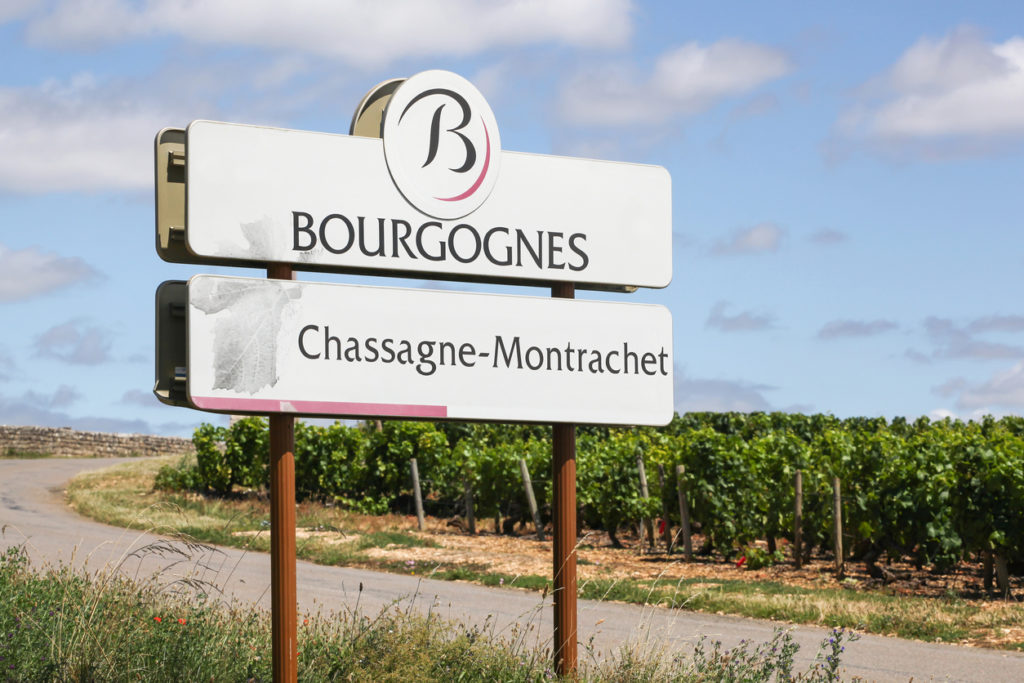
Puligny-Montrachet
Puligny-Montrachet is another notable white wine from Burgundy. It is known for its minerality, acidity, and elegance. The Burgundy wine is made from Chardonnay grapes grown in the village of Puligny-Montrachet. Puligny-Montrachet wines are often compared to Montrachet, but they are generally less expensive.
Chambertin
Chambertin is one of the most famous red wines from Burgundy. It is made from Pinot Noir grapes grown in the village of Gevrey-Chambertin. The wine is known for its power, complexity, and aging potential. Chambertin wines tend to be expensive due to their limited production.
Musigny
Musigny is another notable red wine from Burgundy. It is made from Pinot Noir grapes grown in the village of Chambolle-Musigny. The Burgundy wine is known for its elegance, finesse, and complexity. Musigny wines tend to be expensive due to their limited production.

Romanée-Conti
Romanée-Conti is considered one of the greatest red wines in the world. It is made from Pinot Noir grapes grown in the village of Vosne-Romanée. The wine is known for its complexity, power, and long aging potential. Romanée-Conti wines are very expensive and highly sought after by collectors and are considered to be the best Burgundy wines.
Nuits-Saint-Georges
Nuits-Saint-Georges is a notable red Burgundy wine. It is made from Pinot Noir grapes grown in the village of Nuits-Saint-Georges. The wine is known for its power, structure, and aging potential. Nuits-Saint-Georges wines are generally less expensive than other notable red wines from Burgundy.
Gevrey-Chambertin
Gevrey-Chambertin is another notable red Burgundy wine. It is made from Pinot Noir grapes grown in the village of Gevrey-Chambertin. The wine is known for its power, structure, and aging potential. Gevrey-Chambertin wines tend to be less expensive than other notable red wines from Burgundy.
Clos-de-Vougeot
Clos-de-Vougeot is a notable red wine from Burgundy. It is made from Pinot Noir grapes grown in the vineyards surrounding the Château du Clos de Vougeot. The wine is known for its power, complexity, and aging potential. Clos-de-Vougeot wines tend to be less expensive than other notable red wines from Burgundy.
Overall, Burgundy is a region that produces some of the finest wines in the world. Each notable wine has its own unique characteristics and flavor profile, making it a must-try for any wine enthusiast.
Sub-Regional Wines
The Burgundy wine region is divided into sub-regions, each with its own unique terroir and grape varieties. Here are some of the sub-regions that produce some of the best wines in Burgundy:
Meursault
Meursault is a small village in the Côte de Beaune sub-region of Burgundy. It is known for producing some of the finest white wines in the world, made from the Chardonnay grape. Meursault wines are known for their rich and buttery texture, with flavors of hazelnuts, honey, and citrus.
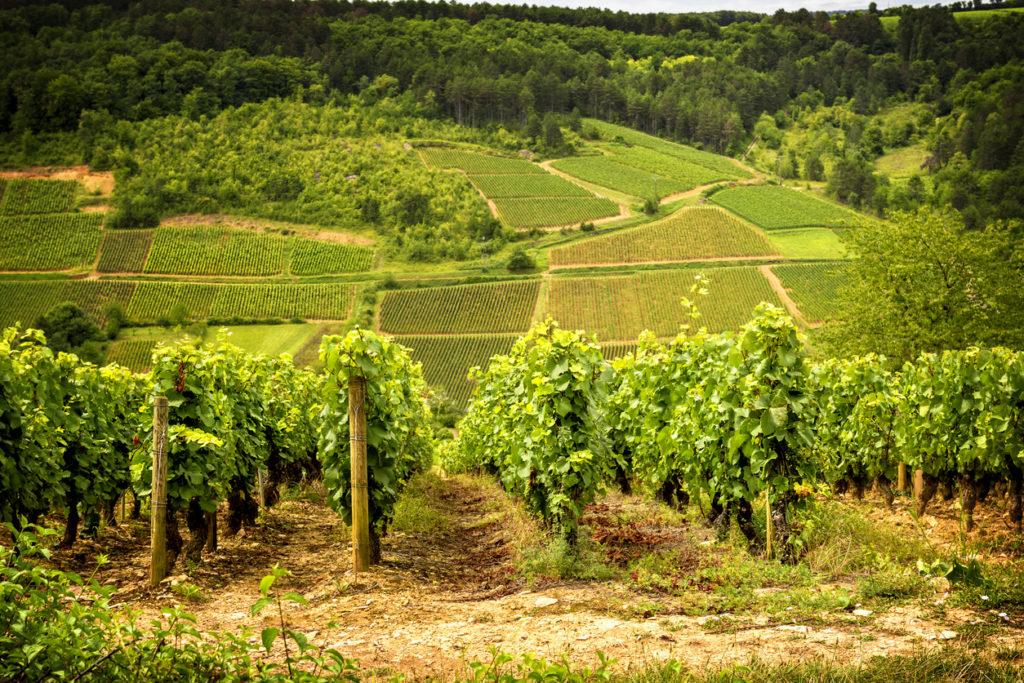
Chablis
Chablis is a sub-region of Burgundy that is located in the northernmost part of the region. It is known for its crisp and refreshing white wines, which are made from the Chardonnay grape. Chablis wines are known for their minerality, acidity, and flavors of green apple and lemon.
Volnay
Volnay is a village in the Côte de Beaune sub-region of Burgundy. It is known for producing some of the most elegant and refined red wines in Burgundy, made from the Pinot Noir grape. Volnay wines are known for their silky texture, delicate tannins, and flavors of red berries and flowers.
Beaune
Beaune is the capital of the Côte de Beaune sub-region of Burgundy. It is known for producing both red and white wines, which are often blended from grapes grown in different vineyards. Beaune wines are known for their complexity, with flavors of red and black fruit, spices, and earthy notes.
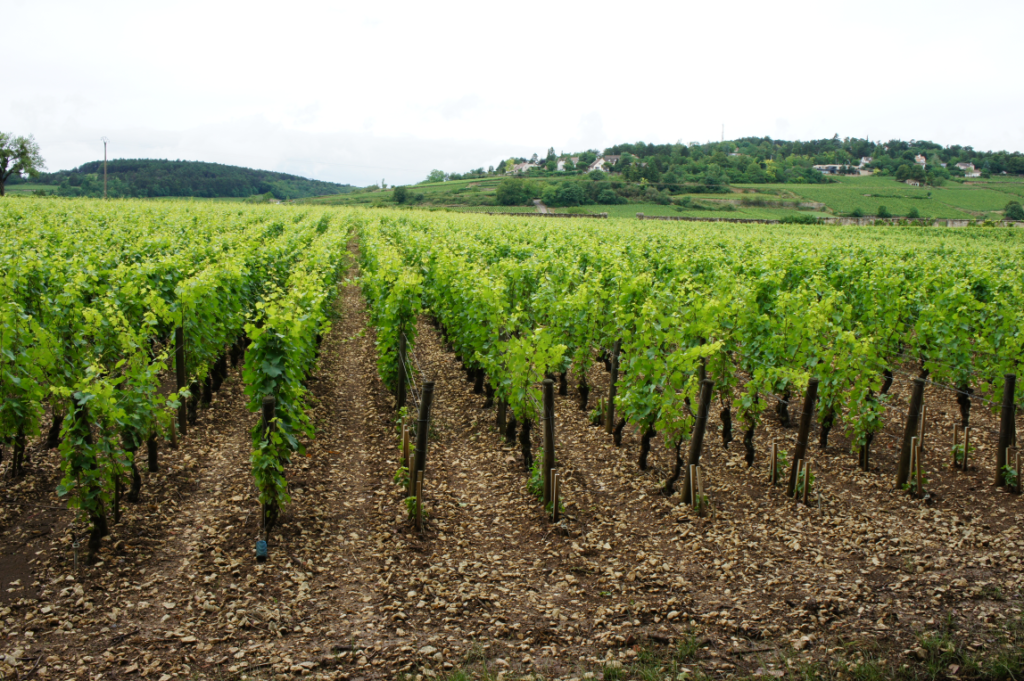
Pommard
Pommard is a village in the Côte de Beaune sub-region of Burgundy. It is known for producing powerful and robust red wines, made from the Pinot Noir grape. Pommard wines are known for their firm tannins, dark fruit flavors, and spicy notes.
Mercurey
Mercurey is a village in the Côte Chalonnaise sub-region of Burgundy. It is known for producing both red and white wines, which are often more affordable than those from other sub-regions. Mercurey wines are known for their fruit-forward flavors, with red fruits in the red wines and citrus and apple in the white wines.
Pouilly-Fuissé
Pouilly-Fuissé is a sub-region of Burgundy that is located in the southernmost part of the region. It is known for producing some of the finest white wines in Burgundy, made from the Chardonnay grape. Pouilly-Fuissé wines are known for their richness, with flavors of ripe fruit, honey, and nuts.
Viré-Clessé
Viré-Clessé is a sub-region of Burgundy that is located in the southernmost part of the region. It is known for producing high-quality white wines, made from the Chardonnay grape. Viré-Clessé wines are known for their freshness, with flavors of citrus and apple, and a mineral finish.
Corton
Corton is a sub-region of Burgundy that is located in the Côte de Beaune sub-region. It is known for producing some of the most powerful and complex red and white wines in Burgundy. Corton wines are known for their rich and intense flavors, with red fruit and spice notes in the red wines and honey and nuts in the white wines.
Bouzeron
Bouzeron is a village in the Côte Chalonnaise sub-region of Burgundy. It is known for producing high-quality white wines, made from the Aligoté grape. Bouzeron wines are known for their freshness and acidity, with flavors of citrus and green apple.
Givry
Givry is a village in the Côte Chalonnaise sub-region of Burgundy. It is known for producing both red and white wines, which are often more affordable than those from other sub-regions. Givry wines are known for their fruit-forward flavors, with red fruits in the red wines and citrus and apple in the white wines.
Rully
Rully is a village in the Côte Chalonnaise sub-region of Burgundy. It is known for producing both red and white wines, which are often more affordable than those from other sub-regions. Rully wines are known for their fruit-forward flavors, with red fruits in the red wines and citrus and apple in the white wines.
Fixin
Fixin is a village in the Côte de Nuits sub-region of Burgundy. It is known for producing both red and white wines, which are often more affordable than those from other sub-regions. Fixin wines are known for their earthy and spicy flavors, with red fruits in the red wines and citrus
Vinification and Quality
Aroma and Acidity
Burgundy wines are known for their elegant aroma and high acidity. The aroma of Burgundy wines is influenced by the grape variety, terroir, and the winemaking process. Chardonnay-based white wines have a floral and fruity aroma, while Pinot Noir-based red wines have a complex aroma of red fruits, spices, and earthy notes. The acidity of Burgundy wines is high, giving them a refreshing and crisp taste. The acidity is influenced by the climate, soil, and the winemaking process.
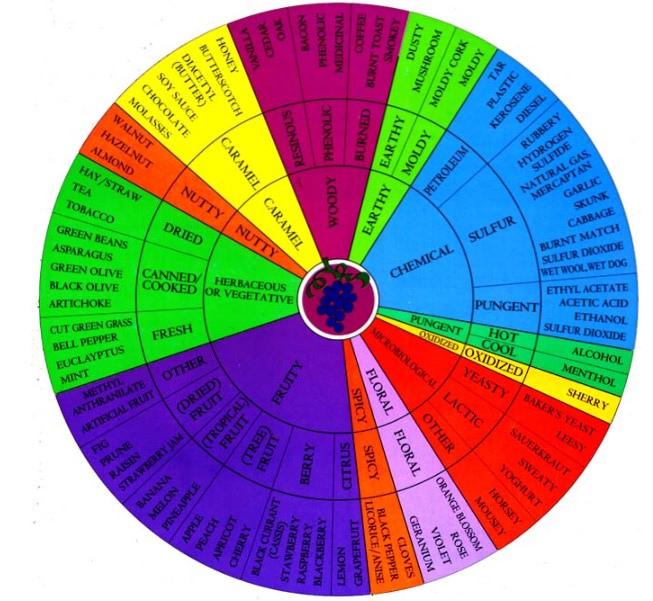
Tannins
Tannins are present in red Burgundy wines and are responsible for the wine’s structure and mouthfeel. The tannins in Burgundy wines are usually light to medium and are derived from the grape skins and stems. The tannins are balanced with the wine’s acidity, giving the wine a smooth and elegant taste.
Quality
Burgundy wines are known for their high quality and complexity. The quality of Burgundy wines is influenced by the grape variety, terroir, and the winemaking process. The classification system of Burgundy wines is based on the quality of the vineyard, with Grand Crus being the highest quality and Premier Crus being the second-highest quality. The quality of Burgundy wines is also influenced by the vintage, with some years producing exceptional wines.

In terms of vinification, Burgundy wines are made using traditional winemaking techniques, with a focus on terroir and minimal intervention. The grapes are handpicked and sorted, and the wine is aged in oak barrels to add complexity and flavor. The winemakers in Burgundy are known for their attention to detail and commitment to producing high-quality wines.
Overall, Burgundy wines are known for their elegance, complexity, and high quality. The combination of grape variety, terroir, and winemaking techniques produces wines that are unique and highly sought after.
Burgundy Sparkling Wines
Crémant de Bourgogne is a sparkling wine produced in the Burgundy region of France. This bubbly is made using grapes that are carefully handpicked and sorted to ensure only the best quality fruit is selected. The grapes used for Crémant de Bourgogne include Chardonnay, Pinot Noir, Aligoté, and Gamay and must be grapes sourced from the Burgundy region.

Each grape variety brings a unique character to the taste profile of Cremant de Bourgogne. Chardonnay adds notes of citrus and apple while Pinot Noir lends flavors of red berries and spice. Aligoté contributes a bright acidity, and Gamay provides a touch of fruitiness.
The taste of Cremant de Bourgogne can be described as crisp with lively bubbles that dance on your tongue.

